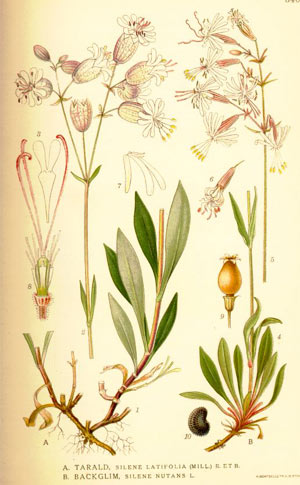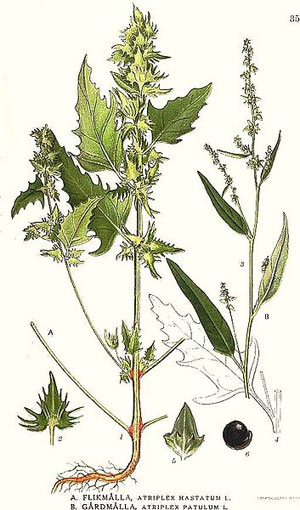 Our garden in motion at Altaura Farm - Our garden in motion at Altaura Farm -
Casale di Scodosia
The garden "on the move" was born in the spring of 2012 at Casale di Scodosia.
I state here that I am very ignorant on the subject horticultural. Therefore, almost everything I will tell you is derived from personal observations and not from cultural, historical, or scientific experience.
The garden is a space of about 1500 square meters, which coexists with the wooded area of, oaks, hazels, some apricot, and mulberry trees. The layout is 5x6 meters in dimension. We cut away all growth which was close to the ground and removed the stones. We left all the other plants which were already grown to high heights. And, the sun is more than enough to make everything else grow.
For some years the space had been used as an organic garden. It has now been fenced-in with a high net because most farm animals here are free to move at will. So, instead of enclosing the animals within pens, we have fenced-in the garden! The chickens and rabbits prefer salads or radishes. They are not fond of Tomato and Solanaceae. This means that these species can be planted safely, even in a space which is not fenced-in.
 We then forgot the garden for a period of one year. The chicory and silene plants were allowed to go to seed, and when we began harvesting their leaves, we were careful not to damage the roots. This practice has meant that radicchio and silene, who live in adjacent beds to one another, reproduce themselves without manual sewing by us. The plants have proven to be very resistant to heat, drought and cold winter temperatures. Without using any type of irrigation, we have enjoyed wonderful success during the past three years, and the two plants have colonized their spaces and become predominant over other local herbs. The colonization of the small territory by the radishes and silene was possible because, in the first year of planting, we left the plants to go to seed. Additional radish and silene seeds falling on the spot deepened and increased plant density and therefore, the following year experienced a pronounced effect on growth, and now radish and silene grow together to form a nice compact turf that does not fear the competition from neighboring herbs and plants. The two plants are so well entrenched that they easily withstand the rigors of summer. Only a few plants such as dill, borage, or orache (atreplix) are seen to coexist with them, but these plants do not interfere, rather they accompany the radish and Silene. We then forgot the garden for a period of one year. The chicory and silene plants were allowed to go to seed, and when we began harvesting their leaves, we were careful not to damage the roots. This practice has meant that radicchio and silene, who live in adjacent beds to one another, reproduce themselves without manual sewing by us. The plants have proven to be very resistant to heat, drought and cold winter temperatures. Without using any type of irrigation, we have enjoyed wonderful success during the past three years, and the two plants have colonized their spaces and become predominant over other local herbs. The colonization of the small territory by the radishes and silene was possible because, in the first year of planting, we left the plants to go to seed. Additional radish and silene seeds falling on the spot deepened and increased plant density and therefore, the following year experienced a pronounced effect on growth, and now radish and silene grow together to form a nice compact turf that does not fear the competition from neighboring herbs and plants. The two plants are so well entrenched that they easily withstand the rigors of summer. Only a few plants such as dill, borage, or orache (atreplix) are seen to coexist with them, but these plants do not interfere, rather they accompany the radish and Silene.
Considering these observations as a base –observations which I have personally noted– we wish to extend this practice to other horticultural plants commonly used, and so we have planted eggplant, peppers, garlic, leeks, onions, potatoes, peas, parsley, broccoli, clary sage, and normal wild celery, fennel, dill, coriander, grass, and variety of salads, as well as mint in the same method.
 The land previously used for organic gardening at Casale di Scodosia was unfortunately plowed, but this is certainly the last time that will happen. After cultivating these plants and vegetables, local herbs such as Mallow, Plantain, Meddle (Chenopodium), Spinach, and wild grasses have appeared. Small oak acorns were born last as well, and other plants of which we do not yet know the names or uses have also begun to make their natural cycle of growth in our gardens. In particular, Spinach and Meddle have become very arrogant among our fields. Much is used raw in the making of salads or as main ingredients in many pies. Many times I have gone to the garden to handpick herbs, including roots, of the horticultural plants which are growing because they did not have enough sun or room to grow. I like to remove them by hand, because I learn a lot about the herbs which I still do not know by name. I feel the stinging or cutting from those who have ribs or thorns. I realize that some plants prefer to grow close to one another. Sometimes the plants choose their company. Some are interwoven with others, even if other neighboring plants try to maintain their independence, and what I love so much is that after a while, my hands bear the scents of all the herb’s flavors. Each herb has its own perfume, and after many touches from my fingers there is a symphony of flavors. The land previously used for organic gardening at Casale di Scodosia was unfortunately plowed, but this is certainly the last time that will happen. After cultivating these plants and vegetables, local herbs such as Mallow, Plantain, Meddle (Chenopodium), Spinach, and wild grasses have appeared. Small oak acorns were born last as well, and other plants of which we do not yet know the names or uses have also begun to make their natural cycle of growth in our gardens. In particular, Spinach and Meddle have become very arrogant among our fields. Much is used raw in the making of salads or as main ingredients in many pies. Many times I have gone to the garden to handpick herbs, including roots, of the horticultural plants which are growing because they did not have enough sun or room to grow. I like to remove them by hand, because I learn a lot about the herbs which I still do not know by name. I feel the stinging or cutting from those who have ribs or thorns. I realize that some plants prefer to grow close to one another. Sometimes the plants choose their company. Some are interwoven with others, even if other neighboring plants try to maintain their independence, and what I love so much is that after a while, my hands bear the scents of all the herb’s flavors. Each herb has its own perfume, and after many touches from my fingers there is a symphony of flavors.
And yet ... when some herbs grow to 1 meter high, they still tear in your hands and leave the ground effortlessly. I imagine that these have very shallow roots, unlike others that are raised slightly off the ground and tear resistance only with greater effort.
I cherish where sporadic borage are born.
The dilemma arises when two plants, both you want to save, are disturbing with each other. Then you must choose to keep one or the other. The criterion of choice is natural. The rarest plant, or the one which has proven more difficult to acclimate to reproduce, is kept. Another thing I enjoy is the knowledge that has been acquired through experience. My hand discerns, without delay, what is wanted and what is to be eliminated. I am learning the most effective ways to deal with the eradication.
The plants which are raised in the pathways, alongside those plants which are to be saved, make an excellent mulch for what will later become straw!
Then there is the holy of holies, a location behind a protective fence of about 12 square meters, where I planted the most unique plants. These plants are the most difficult to reproduce, and they are the most valuable. They include one wild Celery plant which was given to me by a local farmer; I also brought some Corn from Lebanon. Other, unknown, seeds have also been brought from Lebanon, as well as Perilla, Cotton, and some Broccoli from Sicily.
A drip-system of irrigation has been achieved using pipes on the ground. The water comes from a well 60 meters below ground level.
|
|
